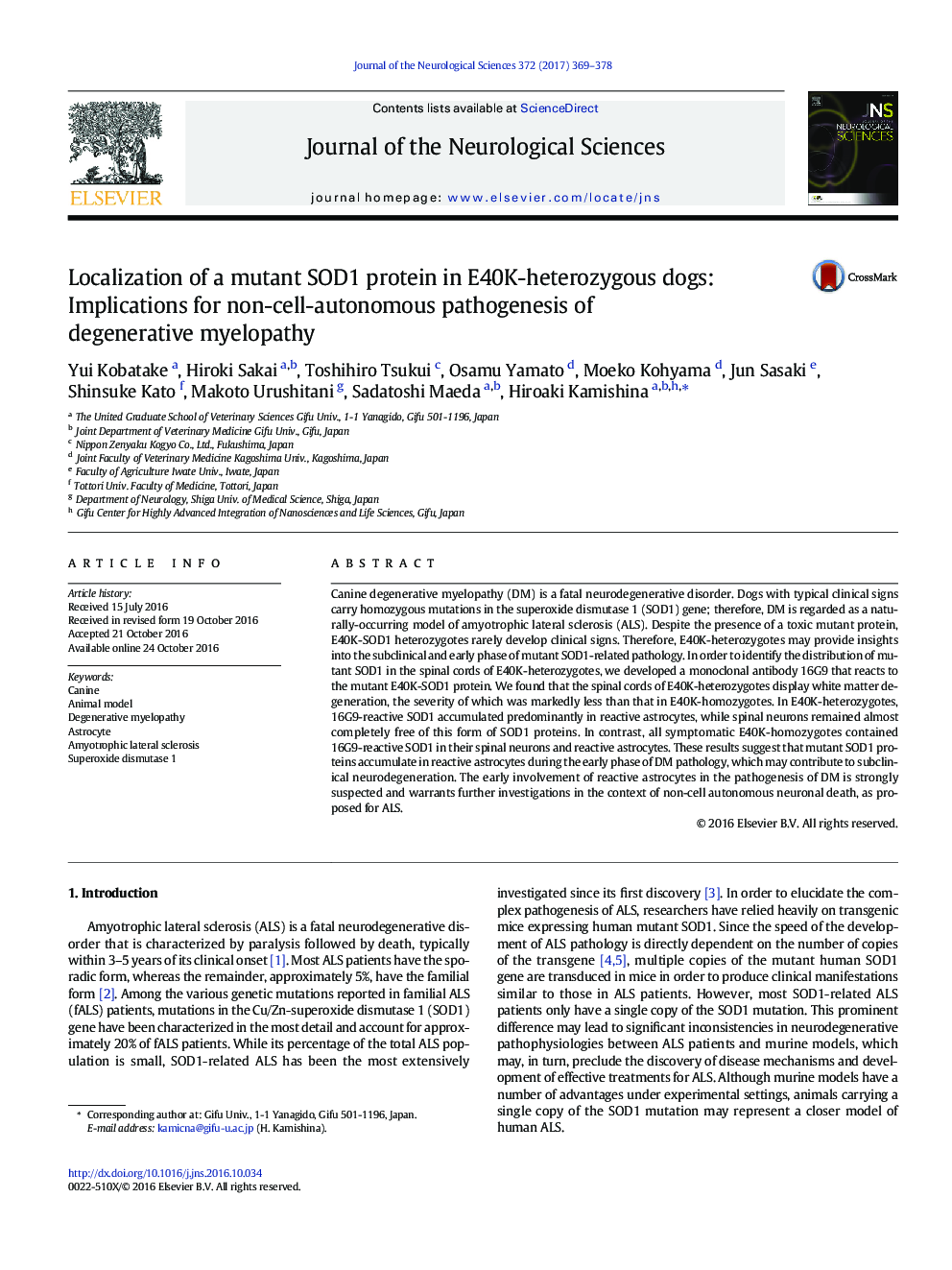| کد مقاله | کد نشریه | سال انتشار | مقاله انگلیسی | نسخه تمام متن |
|---|---|---|---|---|
| 5502968 | 1535090 | 2017 | 10 صفحه PDF | دانلود رایگان |

- Canine degenerative myelopathy (DM) is a potential spontaneous model of ALS.
- Aggregates of mutant SOD1 accumulated in spinal neurons of symptomatic DM.
- Spinal neurons were free of mutant SOD1 aggregates during the early phase of DM.
- The mutant SOD1 proteins accumulated in astrocytes during the early phase of DM.
- The results imply the importance of non-cell autonomous mechanism of DM pathogenesis.
Canine degenerative myelopathy (DM) is a fatal neurodegenerative disorder. Dogs with typical clinical signs carry homozygous mutations in the superoxide dismutase 1 (SOD1) gene; therefore, DM is regarded as a naturally-occurring model of amyotrophic lateral sclerosis (ALS). Despite the presence of a toxic mutant protein, E40K-SOD1 heterozygotes rarely develop clinical signs. Therefore, E40K-heterozygotes may provide insights into the subclinical and early phase of mutant SOD1-related pathology. In order to identify the distribution of mutant SOD1 in the spinal cords of E40K-heterozygotes, we developed a monoclonal antibody 16G9 that reacts to the mutant E40K-SOD1 protein. We found that the spinal cords of E40K-heterozygotes display white matter degeneration, the severity of which was markedly less than that in E40K-homozygotes. In E40K-heterozygotes, 16G9-reactive SOD1 accumulated predominantly in reactive astrocytes, while spinal neurons remained almost completely free of this form of SOD1 proteins. In contrast, all symptomatic E40K-homozygotes contained 16G9-reactive SOD1 in their spinal neurons and reactive astrocytes. These results suggest that mutant SOD1 proteins accumulate in reactive astrocytes during the early phase of DM pathology, which may contribute to subclinical neurodegeneration. The early involvement of reactive astrocytes in the pathogenesis of DM is strongly suspected and warrants further investigations in the context of non-cell autonomous neuronal death, as proposed for ALS.
Journal: Journal of the Neurological Sciences - Volume 372, 15 January 2017, Pages 369-378